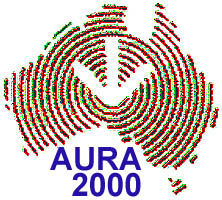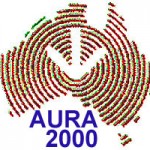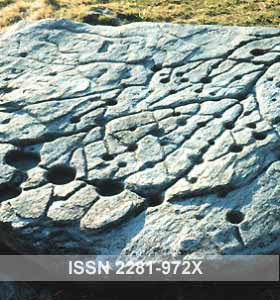TRACCE no. 12 – by Jean-Loïc Le Quellec, Manuel Gutierrez
Third AURA Congress. Millennium: a fresh start.
Hosted by the Australian Rock Art Research Association
in Alice Springs, 10 – 14 July 2000.

Rock Art in Africa – Call for papers
Recent and methodological research on rock art in Africa is welcome in this third Congress which should become an important place for the presentation and discussion of ideas concerning rock art.
Africa’s Rock Art is both abundant and varied: from the Messak in North to the Cape in the South, from the Horn of Africa to the Atlantic Ocean, are found thousands of sites bearing diverse forms of expression including reliefs, engravings and paintings. Rich in thematic content, they correspond in different degrees to the socio-cultural conceptions of the diverse societies which people the continent. The time span of artistic creation is also extensive, flowering over several millenia. One finds painted plaques dated to -26.000 BP at the Apollo 11 site in Namibia as well as recent engravings and paintings.
Research in African Rock Art, while only a little more than a century old, has given several hundred studies. The extent of the research and the rigor employed vary: some studies represent the spirit of the times, while others reflect the author’s prejudices, but recently, more methodological studies have been undertaken. There still remains, however, much ground to be covered in the study, the comprehension and the protection of African rock art sites.
In Africa, as in other regions of the world, writing has only been used during the most recent eras of human occupation. The study of rock art in a historical perspective is thus very important. In addition, the meaning and symbolism of certain figures and colors has been maintened up to very recent times, and indeed, in some cases, till present. An ethnological approach, methodologically conducted may thus be able to open a path to understanding paintings and engravings and give us a better insight into the past.
In addition, research techniques that have been used to study rock art sites elsewhere should also be applied to African sites. Examples of these techniques include the analysis of pigments, but dating by AMS C14 and archaeological, palaeo-environmental and linguistic data should also be integrated into the study of rock art.
Lastly, the fragility of the sites and the of depictions, the continued occupation of these spaces, leading in some cases to the destruction of the art, make these sites very vulnerable. It is necessary also to discuss measures of conservation which may be taken to preserve the sites, and in addition, to preserve the memories held by nearby peoples and societies that pertain to the meaning of these sites, as these neighboring societies play an important role in the protection and in the understanding of this cultural heritage.
Papers covering any of these topics, presenting recent work, new perspectives in research or promising results will be most welcome.
Jean-Loïc Le Quellec
Dr. en Anthropologie, Ethnologie, Préhistoire
F – Brenessard – 85540 – St-Benoist-sur-Mer
Tel/fax : 00 33 (0)2 51 97 43 67
Manuel Gutierrez
Dr. en Anthropologie, Ethnologie, Préhistoire
Maître de Conférences à l’Université de Paris I (Panthéon-Sorbonne)
Laboratoire de Recherches sur l’Afrique – Maison de l’Archéologie et l’Ethnologie
21, allée de l’Université, F – 92023 – Nanterre-cedex
Tel/fax : 00 33 (0)1 46 69 26 27
Official Page | Academic program | Field Trips
back to index TRACCE no. 
![]()


















Leave a Reply